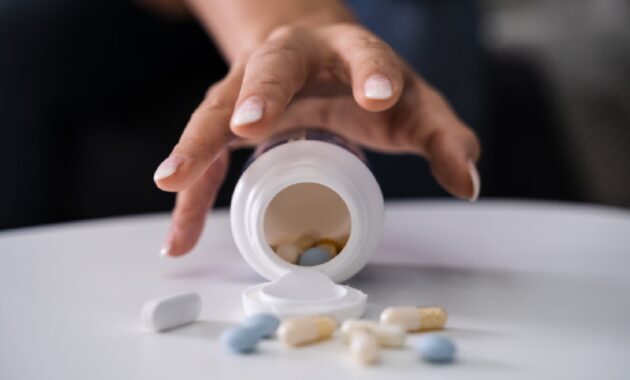Over the years, substance addiction has almost reached pandemic level around the world. In India, a study by the Ministry of Social Justice indicates that 14% of the population uses alcohol, 2.8% report using cannabis and related products and 2.1% use opioids. Even more alarmingly, in India alone, more than 15 million children aged between 10 and 17 years are addicted to substances, according to the Indian government.
Although the factors that lead to addiction are varied, it is extremely hard to pull oneself out of the vicious cycle of addiction. Additionally, in a recent study, it has been found that individuals who are caught in one addiction are at an increased risk for developing another new addiction. While this is especially true among patients with alcohol dependence, this could be equally applied to other forms of substance abuse, including opioids, sedatives, inhalants, cocaine, amphetamines and cannabis, among other things.
Understanding how addiction begins
Understanding the chronology of how an addiction takes hold of a patient can throw tremendous light on how to overcome it.
No one gets addicted from day one. All forms of addiction, including substance addiction, begin with small, measured amounts of experimentation. Factors like curiosity, peer group pressure and normalisation of substance use in the family often play a role in such initiation. Families where one or two generations have already been familiar with substances such as alcohol, tend to witness a higher rate of addiction in later generations.
In certain medical cases, substances that act as secondary support to psychiatric, mental and behavioural health issues such as depression, anxiety, psychosis, stress, and attention deficit and hyperactivity disorder (ADHD) can also lead to euphoric experimentation.
Addiction as a medical disorder – the vicious cycle of pleasure and pain
It is important to know that addiction is classified as a medical condition, because of the neurobiological effects of substances. Substance use creates neural changes in the brain that lead patients to seek out the use of that substance or others – a vicious cycle of pleasure and pain.
If care is not taken over sporadic and initial experimentation, then patients tend to linger on the initial pleasure of substances. A repeated behaviour in a short span of time eventually turns into a compulsive use of substances. In a matter of time, patients find it hard to avoid use and seek instant comfort through the use of the substance. Soon, patients enter a vicious cycle of seeking pleasure, resulting in pain when the effect of the substance wears off, thereby seeking heightened pleasure through increased amounts of or repeated substance use.
Select Topics of your interest and let us customize your feed.
PERSONALISE NOW
There is a cyclical effect of behaviours that create a vicious cycle. For instance, after initial experimentation with drugs or alcohol, people with the habit of repeated substance use often find themselves experiencing loneliness, loss of livelihood or subdued performance at work. However, these situations which were the result of substance use, in turn become the reasons to seek out drugs or alcohol. This pushes the patient further into an unending spiral of substance addiction.
A case for early intervention
The cascading effects of addiction are a strong argument in favour of early intervention in treating patients. When not arrested, the compulsive-turned-addictive behaviour leads to severe damage to personal and societal well-being in general.
The treatment of addiction needs to be as early and swift as possible because of the medical, societal and economic impact it has on patients and the people around them. Often, repercussions of addictions are seen in the form of the disturbed physical well-being of the patient coupled with mental issues. This goes on to disturb the family dynamics, which eventually leads to a large impact on society. Suboptimal work performance and even unemployment put additional stress on the economy and the health infrastructure.
Treatment of addiction
While early intervention is ideal, subsequent treatment often follows a recommended set of procedures that are individualized; the treatment plan is specific to the addicted patient. For instance, facilities like Sukoon give due care to addressing the specific needs of patients on a case-to-case basis, depending on the severity and type of addiction. While a period of detoxification at residential programs in a hospital or specialised facility can help, there are usually two parts to treatment. The first part is to ‘detox’ or eliminate the substance from the patient’s system, which may involve also managing withdrawal symptoms like headaches, cravings, and psychological distress because the body is now dependent on the substance. The second is more important and long-lasting; addressing the social, behavioural and psychological underlying factors that have led to addiction.
The bottom line is that addiction is curable. Due to several advancements in health and medical treatment and procedures, as well as more awareness about the factors that help patients overcome addiction, the success rate of treating addiction has grown exponentially over the years. With awareness, medical care and a supportive environment, alternative sources of reward can be nurtured, resulting in patients returning to fulfilling and productive lives.
About the Author:
Dr Sachin Mangla is an accomplished neuropsychiatrist with over 12 years of experience. A referring doctor at Sukoon, Dr. Mangla specialises in treating patients suffering from mental illnesses such as addiction, schizophrenia, obsessive-compulsive disorder (OCD), and post-traumatic stress disorder, among others.
#Chronology #Addiction #Watch #Key #Warning #Signs
